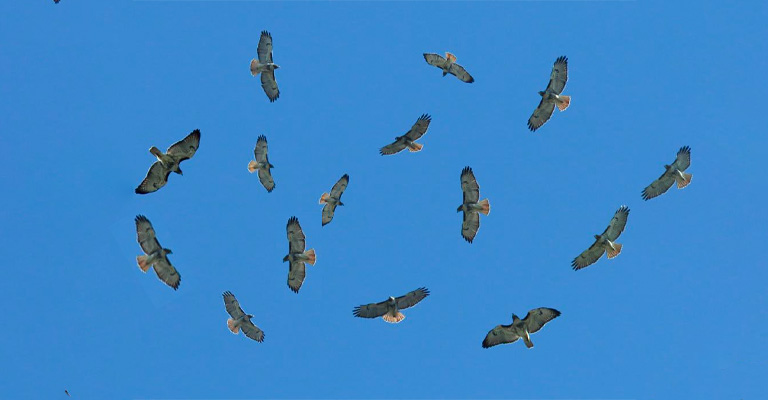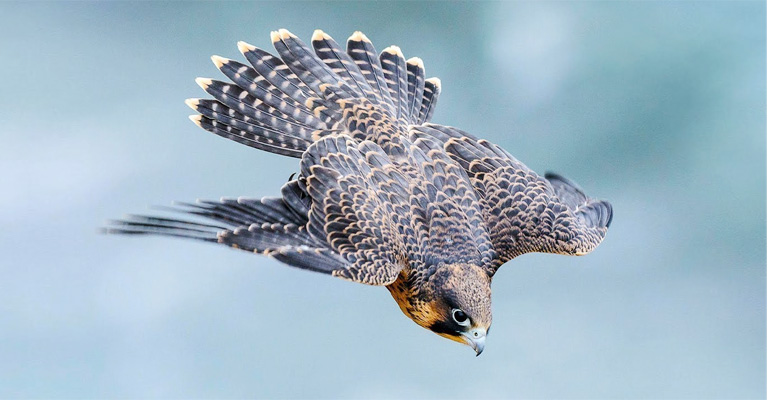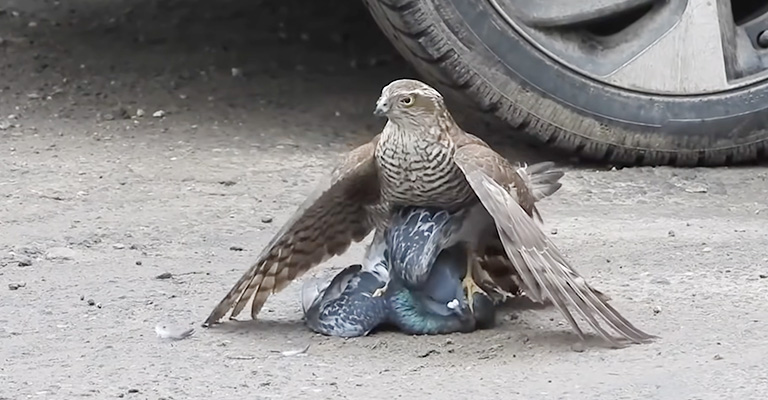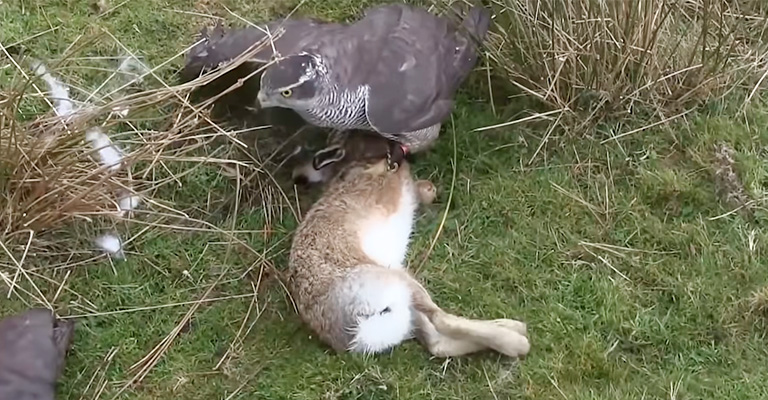You are insanely curious about birds and that’s why you are here right? Today, we are going to talk about the Hawks, who we often mistake for the Eagles.
They look mostly alike and even belong to the same family (Accipitridae). However, our point of discussion isn’t about how similar or different they are. If you want to learn more, we have a full section on Eagles
- How Far Can Eagles See
- How much can an eagle lift
- Do Eagles Recognize Their Offspring
- Why Do Eagles Lock Talons
- How Do Bald Eagles Mate
But not today! Today, we will highlight the interesting nature of the hawks. They are the most familiar birds of prey but there have been talks on the street about their peculiar group hunting. Do hawks hunt in groups?
We will explore the answers below. Let’s start!

Key Points:
- Hawks have the sharpest vision in the animal kingdom. They have 8x times better eyesight than us.
- The nickname of the peregrine falcon is “Duck Hawk.” It is the fastest animal, not only bird on Earth. It can reach over 300 km per hour during its stoop.
- Over 270 different species of hawks are available worldwide. They all are different with unique traits and behaviors. Size varies from tiny sharp-shinned hawk to the massive ferruginous hawk.
- Hawks are mainly monogamous pairs. They mostly mate for life and do everything together.
- Most hawks are diurnal hunters. However, there are exceptions too! The Northern Hawk Owl is crepuscular or nocturnal.
- In the wild, hawks can live surprisingly long lives. Some of them can reach 20 years or more.
Do Hawks Hunt In Groups?
To answer this question, we have to first learn about the hunting pattern of the hawks. Hawks apply different hunting techniques, right where it’s needed. And we should begin there,
1) Stooping

Like Goshawks, Peregrines, Hobbies, and the Buzzards, hawks are also known for their flagship attack style – The Stoop. They steep dive from great heights to capture prey, at a high speed.
It is like a stone falling from the sky! They fold their wings and dive. However, keep in mind that, Stoop is highly effective when applied individually. The birds have better control during they descend alone.
Hence, it might not be a wise decision to stoop as a group.
2) It’s an Ambush!

Some solitary hawk species, like the Northern Harrier, and Marsh Hawk apply this technique in hunting. They fly low and swoop in from different directions to confuse the prey.
It is an ideal technique to apply in a group. The hawks attack from different angles and take the prey by surprise. Usually, the hawks don’t miss, but even if they do and the prey hides deeper, a part of the group will try and flush the prey out while the others will wait in ambush.
3) Use Talons & Beaks

The primary weapons of the hawks are talons and beaks. When they get close enough to their prey, they strike with their sharp talons and easily immobilize the target.
In addition to talons, hawks suitably use their beaks in hunting too. They have razor-sharp beaks that can easily cut through the flesh of their prey. However, not most often, but they use beaks to fight off small prey like small reptiles, birds, and mammals.
Here are the fighting tactics of the hawks. But the question remains, do hawks hunt in groups?
You have read the way they fight and hunt. So, what do you think? Continue reading to find out for yourself.
Do Hawks Hunt in Groups?
The answer may disappoint you!
Most raptors are solitary, meaning, they prefer an independent lifestyle instead of living in flocks or groups. The same goes for the Hawks too.
Hawks are primarily solitary hunters. They often choose to hunt, nest, and feed alone rather than in the company of other hawks.
However, not all of them follow the rules. There are some exceptions too! For instance, think of the Harris’s Hawk from the Southwestern US. They form a group of two to six and hunt together.
They are the ones who ambush and hunt the prey. First, they locate the prey and dive in from different directions as mentioned earlier. Soon after the prey surrenders and the hunt is complete.
This teamwork is really praiseworthy and highly effective in the case of bigger animals and clever prey who hide well.
Although not regular, you may notice a trace of irregular group hunting in other hawks such as the,
Red-Shouldered Hawks: Generally, they fly alone. However, sometimes they may form a small flock of 3 or 4 birds, especially during the migration. This flock can also hunt together for food during this period.
Swainson’s Hawks: Such Hawks show a rare form of cooperative hunting. It is also during migration. They gather in large flocks and take benefit of the group effort to hunt for insects and small mammals.
Ferruginous Hawks: You may find them alone or in a pair. They hunt in close range with each other, meaning, they would not entirely separate from each other while they hunt in winter.
However, when the prey is cleverly hidden, they work together to flush it out and enjoy the meal together.
What Is A Group Of Hawks Called?
Not common but not rare also! Hawks often group to look for thermals and reduce the need to flap during their long journeys. A group of hawks is called kettle, but also known as pot and cast.
What Is The Most Powerful Hawk?
Like Harpy Eagles, who are the most powerful of all the eagles, the Ferruginous Hawk will vouch as the strongest, largest, and grandest hawk of all of its kind, as noted by ornithologist Arthur Cleveland Bent.
They are 2 feet tall and have an incredibly wide wingspan of about 4.7 feet.
In Short,
So, now you know, that hawks are primarily solitary hunters. They don’t usually hunt in groups unless they have to. Some of them are exceptions but not notable! And the flock never makes it larger than a 5-6 team.
We hope our article helped you get it clear about the Hawks! You can always come back for more as we share regular updates on birds and our other avian friends.
Feel free to share our article with others. It will help us grow too!